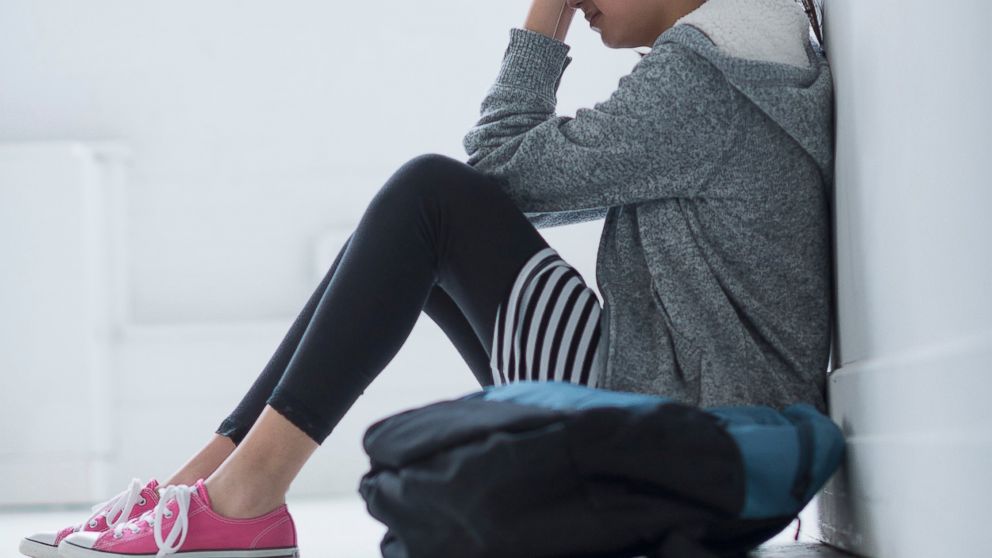First of Its Kind Study of 'Sexual Minority' Youth Finds Them at Risk of Violence
This is the first national study focused on gay, lesbian and bisexual teens.

— -- "Sexual minority" youth -- defined as gay, lesbian and bisexual or not sure -- experience substantially higher levels of physical and sexual violence and bullying than their heterosexual peers, according to a new report released today from the U.S. Centers for Disease Control and Prevention (CDC).
In a first of its kind study, researchers looked at national data to understand the issues faced by an estimated 1.3 million sexual minority youth and called for "accelerated action to protect the health and well-being of these young people."
"This is not only the first time in the nation, this is the first time in the world this kind of study has been conducted," lead researcher Dr. Jonathan Mermin, Director of the National Center for HIV/AIDS, Viral Hepatitis, STD, and TB Prevention at the CDC, told ABC News.
The study provides the first national estimates of the percentage of high school students who are sexual minorities, defined as gay, lesbian, bisexual or unsure. Of the 15,624 participants, two percent identified as gay or lesbian, six percent identified as bisexual and 3.2 percent were not sure of their sexual identity.
Public health officials and other community members will now have data they can use to gain insight into the challenges of these students and help safeguard them from harm, the CDC said.
"If nations are judged by the health and well-being of their children, then what we have here is unacceptable," Mermin stated. "It is something we should act upon rapidly."
The risk of experiencing physical or sexual violence was notably increased for the lesbian, gay and bisexual high school students surveyed. These teens were three times more likely than heterosexual teens to report being physically forced to have sexual intercourse (17.8 percent lesbian/gay/bisexual vs. 5.4 percent heterosexual) and more than twice as likely to experience sexual dating violence (22.7 percent vs. 9.1 percent) and physical dating violence (17.5 percent vs. 8.3 percent).
In addition to facing increased threat of violence, the group also reported high rates of suicidal thoughts or feelings of hopelessness.
"A combination of complex factors can place young people at high risk for suicide, depression, addiction, poor academic performance, and other severe consequences," the study said. "Data demonstrate that LGB students may be at substantial risk for these serious outcomes."
The report found more than 40 percent of lesbian, gay or bisexual teens have reported seriously considering suicide, with 29 percent saying they have attempted it in the past 12 months.
Additionally, 60 percent of these teens reported being so sad or hopeless they stopped doing their usual activities, which is one sign of depression. Furthermore, lesbian, gay or bisexual students are also five times more likely than other students to report using illegal drugs.
The information gathered through these surveys could be a jumping off point to understand why sexual minority youth face increased sexual assault, dating violence and other mistreatment, Dr. Debra E. Houry, Director, National Center for Injury Prevention and Control at the CDC added.
"This data is heartbreaking,” she said. “I’m a mom and when you see this, you want to do something.”
"When you look at the data, you don't see the whys," acknowledges Houry, "and that’s something to think about."
In light of what these findings do illuminate, Houry recommends an holistic approach to caring for the students. Factors that can help protect them include family support, improving stress-coping skills, access to mental health service and fostering social bonds or "connectedness."
One expert hoped that the data would spur a movement to address the risks these teens face and what communities can do to help them.
"Some of the things we already suspected," David Bond, a licensed social worker and vice president of programs at Trevor Project, a leading national organization providing crisis intervention and suicide prevention services to lesbian, gay, bisexual, transgender and questioning youth said. "But the most important thing about this is it helps to spark a national conversation about genuine public health issues."
He mentioned mental health and community resources for teens in crisis, such as his organization’s Trevor Project Lifeline and the National Suicide Prevention Lifeline.
The findings of this study are based on the national 2015 Youth Risk Behavior Survey (YRBS), which was conducted among representative samples of students in grades 9-12 from public and private schools across all fifty states and the District of Columbia.
The CDC's Youth Risk Behavior Surveillance System (YRBSS), which monitors priority health-related behaviors that contribute to the leading cause of health issues among young adults, included two new questions about sexual minority status in its standard YRBS questionnaire for the first time.
Investigators acknowledge several limitations to this study. The data apply only to youth who are enrolled in school and, therefore, may not capture the entire population of lesbian, gay or bisexual youth in the United States. Researchers also did not formulate questions about transgender identity for this study. Moreover, students might not have known their sexual identity, or might not have been willing to disclose it on a questionnaire.
The CDC researchers plan to continue to survey and study interventions to combat the public health issues raised in this study.
Dr. Shali Zhang is a Chief Resident in Dermatology at Emory University. She is also a resident at ABC News in the medical unit.




